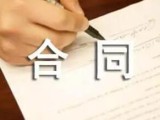unit 2 on the train一. 教学内容:unit 2 on the train lesson 13–lesson 16 1. 单词和短语amount fruit grape here hungry snack soup newspaper card him find child dish end everyone get people word 2. 语法(1)现在进行时。(2)名词复数。3. 交际用语(1)what are they doing?(2)would you like a/an/some…? yes, please./no, thanks.(3)can /could/may i…? 二. 重点、难点分析1. they want a snack.他们想要一份快餐。 want是及物动词,后可直接接宾语,也可接动词不定式。(1)want sth.表示“想要某物”,相当于would like sth.。如:i want a pencil-box.我想要一个文具盒。(2)want to do sth.表示“想要做某事”相当于would like to do sth.。如:i want to take these books to the classroom. 我想把这些书拿到教室里。i want to put these things in the car.我想把这些东西放进车子里。(3)want sb. to do sth.表示“要让某人去做某事”,相当于would like sb. to do sth.。如:my father wants me to clean the windows.我父亲要我把窗户擦一擦。注:want 在句中语气较生硬,而would like 在句中语气较委婉,常用于口语中。 2. a snack is a little food to eat. 快餐就是少许要吃的食物。a little 表示“少许;一点儿”之意,在此句中用来修饰 food 。注意 a little, little以下用法:(1)a little和little作形容词时,都用来修饰不可数名词。a little表示肯定概念,意为“少许(但有一些)”;little表示否定概念,意为“不多,但有一些”。 little和a little也可有自己的修饰语,如very little“很少”only a little“只有一点儿”等。如:i can speak a little english.我会说点英语。(虽不多,但会说一些)there is little milk in the glass.杯子里几乎没有牛奶。(2)a little和little可作副词,修饰动词、形容词或副词。a little意为“少许;有点儿”,表肯定;little意为“几乎不;几乎没有”,表否定。如: meimei likes meat a little. 梅梅有点儿喜欢肉类。 (修饰动词)we are a little later. 我们略微晚了点。(修饰形容词)the shirt is a little big for me. 这件衬衫对我来说有点儿大。(修饰副词)(3)a little和little 可作不可数名词。a little意为“一点儿,少许”,表肯定。little意为“几乎没有;几乎不”,表否定。如: he knows a little of everything. 他样样事都知道一点儿。 i ate little for breakfast. 我早餐没吃什么。 3. i do not know what i want to eat !我不知道我想吃什么!该句是一个主从复合句,i do not know是主句,what i want to eat是宾语从句。在复合句中用作宾语的从句,叫做宾语从句。引导宾语从句的有:连词that (可省略),whether,if;连接代词who,what,which,whose;连接副词when,where,why,how等。注意从句的语序是陈述语序,时态与主句相对应。如: do you know who broke the window?你知道是谁打破窗户的吗?can you tell me how i can get to the zoo?你可以告诉我怎么去动物园吗?let me know whether you are coming.让我知道你是否来。i am glad that you can come.我很高兴你能来。 4. may i have some soup,please?请问我能喝些汤吗?(1)此句是表示客气或委婉的请求,若回答时也用may,就会显得冷淡,不客气,所以应用热情、客气的答语。如:—may i have your name?我可以知道你的名字吗?—certainly.当然可以了。—may i use your bike?我可以用一下你的自行车吗?—sure. here you are.当然可以。给你。(2)some一般用于肯定句中修饰可数名词或不可数名词,表示“一些,几个,若干”。但在表示请求、建议或确信会得到对方的肯定回答时,也可用于疑问句中。如:could i have some fruit juice? 给我些果汁好吗?what about some fish? 来些鱼怎么样?may i borrow some of your books, mr. green? 格林先生,我可以向你借一些书吗? 5. i can not see him, but he is quiet.我看不到他,但是他很安静。(1)see “看到,看见”,常用作及物动词,一般不用进行时态,表示有意识或无意识地看到了某人(物),强调看的结果。如:can you see that tall building over there? 你能看见那边的那座高楼吗?(2)与look, watch辨析, look表示有意识地看,是不及物动词,可用进行时态,其后可接介词加宾语,强调看的动作。如:what are you looking at? 你正在看什么?look, there comes the bus.瞧,公共汽车来了。watch“注视;观看”,表示所看事物的变化、移动和发展,可用进行时态,常作及物动词。如:they are watching a football match.他们在看一场足球比赛。 6. she is reading the newspaper.她正在读报。read多指“看书报”,这里的“看”实为“读”,作及物动词和不及物动词均可。如:don’t read in the sun.不要在阳光下看书。 7. —who is laughing? 谁在笑?—the man behind me. 我后面的那位男士。(1)laugh用作动词,意为“笑,因……而发笑”。如:why are you laughing? 你为什么笑?构成短语:laugh at嘲笑。如:don’t laugh at the other.不要嘲笑别人。laugh用作名词,意为“笑”。注:laugh指一般的“发笑”或“出声大笑”,它意味着不但有面部表情,而且还有动作和声音,多指快乐、高兴。smile指“笑” “微笑”,怀好意,善意。(2)behind me是介词短语作the man的后置定语。注意behind一词的用法:用作介词,表示位置“在……后面”。is lucy’s bag behind her chair? 露茜的包在她的椅子后面吗?用作副 词,意为“在后;向后”。如:he looked behind but saw nobody.他向后看但没有看见人。 8. they’re having fun. 他们正玩得高兴。 fun为不可数名词,表示“乐趣,有趣的人或事,享乐”,其前通常不加冠词。词组have fun“玩得高兴,玩得开心”之意,常用于have fun doing sth.句型,表示“做某事很开心”或“做某事充满乐趣”如: we will have fun (in) learning and speaking english this term这个学期我们将充满乐趣地学、说英语。 9. —may i play with the baby, too? 我也可以和这个小孩子玩吗? —sure. 当然了。(1)may i…?常用来表示请求允许。如:—may i have some more cakes?我可以再吃些蛋糕吗?—yes. of course you can.是的,当然可以。—may i open the window?我可以打开窗户吗?—sorry, you’d better not. 对不起,你最好别开。对于以may开头的提问,回答时如果是否定的,还可以用no, you mustn’t .(不,不可以。),只是语气比较强硬。如:—may i go out to play now?我现在可以出去玩吗?—no,you mustn’t不,你不可以。(2)play with“玩……”“和……一起玩”“用……娱乐”。“如don’t play with fire.不要玩火。 10. people(1)名词,“人;人们”。people为复数名词,不能说成a people 或 peoples,谓语动词要用相应的复数形式。如:there are three people in my family.我家有三口人。(2)people作“人民”解时,前面要加定冠词the 。如:we study for the people.我们为人民而学习。(3)people 还可以作“民族”解,这时它有单复数形式。 如: the peoples in china all love their motherland.中国各民族人民都热爱他们的祖国。 11. find(1)及物动词,“找到;发现”。强调寻找的结果,有偶然发现某人某物之意。一般不用进行时。如: the boy can’t find his mother. (2)look for , find out辨析 look for意为“寻找”,强调寻找的动作或过程,即look for是find之前的过程,而find是look for的结果。 find out意为“弄清楚;查明”,指经过探询、调查之后才发现某人某事。如:i’m looking for my pen here and there, but i can’t find it. 我在到处找我的钢笔,但我没找到。please find out when the train is leaving.请查明火车几点开。注:find还可以作感官动词,其后可接省略to的动词不定式或现在分词作宾语补足语,前者表示动作的全过程,后者表示动作正在进行。如:can you find the children playing cards? 你能找到正在打牌的孩子吗? 12. men、women and children are people.男人、女人和孩子们都是人。 普通名词分为可数名词和不可数名词,可数名词一般有单复数形式。可数名词变复数常有规律可言,但也有部分名词变复数没有规律,需单独记忆。如:man的复数形式是men, woman的复数形式是women, child的复数形式是children, people作“人们”讲时,单数形式的名词具有复数的含义。如:some men are playing cards in the garden.花园里有些男人正在打牌。there are three women in the bus. 在公共汽车上有三位女人。 the children often play computer after school.孩子们放学后经常打电脑游戏。 13. li ming, danny, jenny and mrs. li arrive in beijing at 2:00 in the afternoon. 李明、丹尼、詹尼和李夫人下午两点到达北京。arrive表“到达”之意时,是不及物动词,可单独使用,若其后跟宾语要加介词at或in,at用于较小的场所,如村镇、车站、机场等,in用于较大的场所,如城市、国家等。若其后所接地点为副词则介词要省略。如:i will call you as soon as we arrive.我们一到,我就给你打电话。the woman arrived at the small village two weeks later.两周后,这位妇女到达了那个小村庄。the plane arrives in shanghai at half past ten.这架飞机十点半到上海。注:reach, get to均表示“到达”之意。reach为及物动词,其后直接接宾语,get是不及物动词,其后不能直接接宾语,若跟地点要加介词to,若地点为副词,则介词to要省略。 14. here they are!他们在这儿!该句为倒装句,原来的语序应该是they are here!在英语中以here或there开头的句子一般用倒装语序,若句子主语为名词,则主谓构成倒装,称为完全倒装句;若句子主语是代词,则主谓不倒装,称为不完全倒装句。谓语是行为动词时,还具有正在进行的意思。如:here is your bag.这是你的书包。here are their books.这些是他们的书。here it is.东西在这儿。现在进行时态表示现在或现阶段正在进行的动作或存在的状态。现在进行时是由助动词be+动词的现在分词(即动词+ ing)构成。be有人称和数的变化,既i am + v –ing./he/she/it is /+ v–ing./we/you/they are + v – ing.。 15. 1)动词现在分词形式构成的方法(1)一般在动词原形末尾加-ing。如:stay─staying do─doing read─reading work─working look─looking listen─listening(2)以不发音的字母e结尾的动词,先去掉e,再加-ing,如:give─giving ride─riding take─taking like─liking come ─coming write─writing(3)末尾只有一个辅音字母的重读闭音节词,先双写这个辅音字母,再加-ing。如:put─putting sit─sitting get─getting run─running begin─beginning swim─swimming(4)以 ie 结尾的,变ie为y,再加-ing。如: lie─lying die─dying tie─tying2)现在进行时态的用法  ; (1)表示现在正在进行的动作或状态。常和now等时间状语连用,有时用一个动词,如look, listen等。如:my mother is talking with my teacher.我妈妈正在和我老师谈话。listen! who is singing in the next room?听!谁在隔壁房间唱歌?(2)表示现阶段或前一段时间正在进行的动作,常与表示一段时间的状语(如these days, this week等)连用。如:they are working in a factory these days.他们这几天在工厂劳动。3)现在进行时态的句式 (1)陈述句主语+be(am, is, are)+现在分词+其他。如:they are playing basketball now.他们正在打篮球。i am helping my mother do the housework.我正在帮我妈妈做家务。 (2)否定句主语+be(am, is, are)+not+现在分词+其他。如:the baby isn’t sleeping. she is crying.这个婴儿没在睡觉,她在哭。we aren’t doing our homework. we are talking. 我们没在写作业,我们在说话。(3)疑问句:一般疑问句及特殊疑问句一般疑问句:be(am, is, are)+主语+现在分词+其他? 如:-is he waiting for you at the station? 他正在车站等你吗?-yes, he is. / no, he isn’t. 是的,他在等。/不,他没在等。-are they having a birthday party? 他们正在开生日聚会吗?yes, they are. / no, they aren’t是的,他们正在开生日聚会。/不,他们没在开生日聚会。 特殊疑问句:特殊疑问词+be(am, is, are)+主语+现在分词+其他?如: -what are you doing now? 你现在正在干什么? -i’m listening to the radio.我正在听收音机。-who are they talking with? 他们正在和谁说话?-they are talking with a foreigner.他们正在和一个外国人谈话。4)现在进行时态的一种特殊用法 有些动词(如arrive, leave等)的现在进行时可表示将要发生的动作,一般跟时间状语,表明动作的时间。如: the train is arriving soon. 火车要到了。we are leaving on saturday. 我们星期六动身。 16. 名词变复数名词可以分为可数名词和不可数名词。可数名词表示具体的、个别存在的事物,如人、物体、动植物、团体以及总体中的部分。不可数名词表示不能个别存在的事物,如物质形态、抽象概念等。名词复数的构成分规则变化和不规则变化。1)规则复数形式的构成和读音(1)一般情况下词尾加-s,s在清辅音后面读/s/,在元音和浊辅音后面读/z/,在/t/后读/ ts / ,在/d/后读/dz/。如:cup -cup/s/ girl-girls/z/ day-days/z/ hand-hands/dz/ hat-hats/ts/(2)以s, x, ch , sh 结尾的词在词尾加-es, 读 /iz/.如:bus-buses/iz/ box-boxes/iz/ watch watches/iz/ class-classes/iz/ class-classes/iz/ dish-dishes/iz/(3)以辅音字母+y结尾的词,变y为 i , 再加-es,读/iz/.如: baby -babies/iz/ story-stories/iz/ (4)以-f,-fe结尾的词,一般先把-f,-fe 变为v,再加-es.读/z/.如: leaf-leaves/vz/树叶 shelf-shelves/vz/架子 knife-knives/vz/ wife-wives/vz/ 注:个别只加-s,读/s/。(5)以辅音字母+o结尾的词,多数在词尾加-es,读/z/。如: tomato-tomatoes/z/西红柿 potato-potatoes/z/土豆 hero-heroes/z/英雄 注:以元音字母+o结尾的词和某些以o结尾的外来词,加-s,读/z/。如: zoo-zoos/z/ radio-radios/z/ photo-photos/z/ piano-pianos/z/ 2)不规则复数形式的构成(1)通过内部元音变化构成复数。如:man-men woman-women foot-feet tooth-teeth mouse-mice goose-geese(2)有些名词单复数形式相同。如: sheep-sheep deer-deer chinese-chinese japanese- japanese(3)以加词尾-en构成复数。如:child-children (4)有些学科以s结尾,但通常都作单数名词看待。如:maths 数学 physics 物理学 politics政治学(5)有些单数形式的名词具有复数的含义,要当作复数看待。如:people 人们 police 警察 public 公众
推荐站内搜索:150字日记大全、10篇优秀作文、辽宁考试网成绩查询、全国乙卷理综答案、恐怖作文 吓死人、四年级周记大全、大队委竞选演讲稿、惊艳老师的作文开头与结尾、夺冠观后感言、自学考试网、


 Unit 2 On the Train
Unit 2 On the Train




